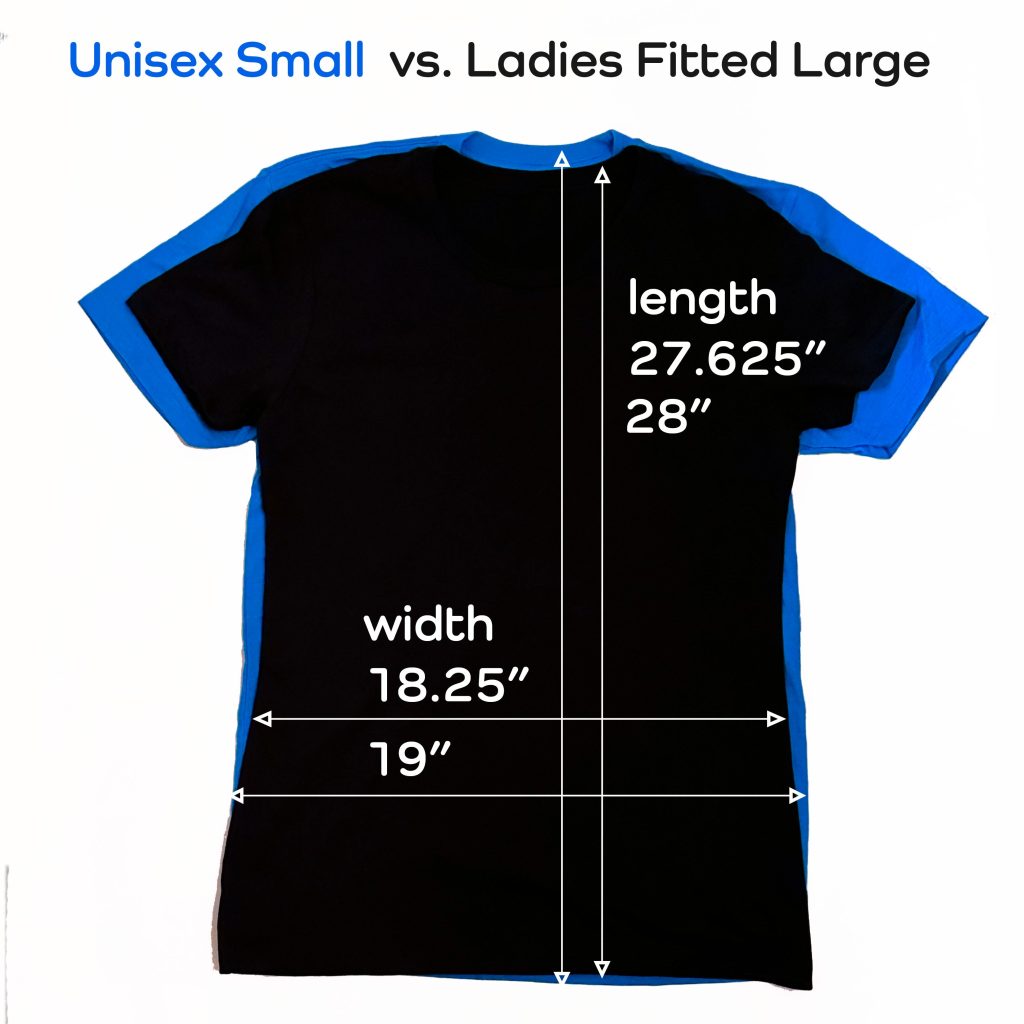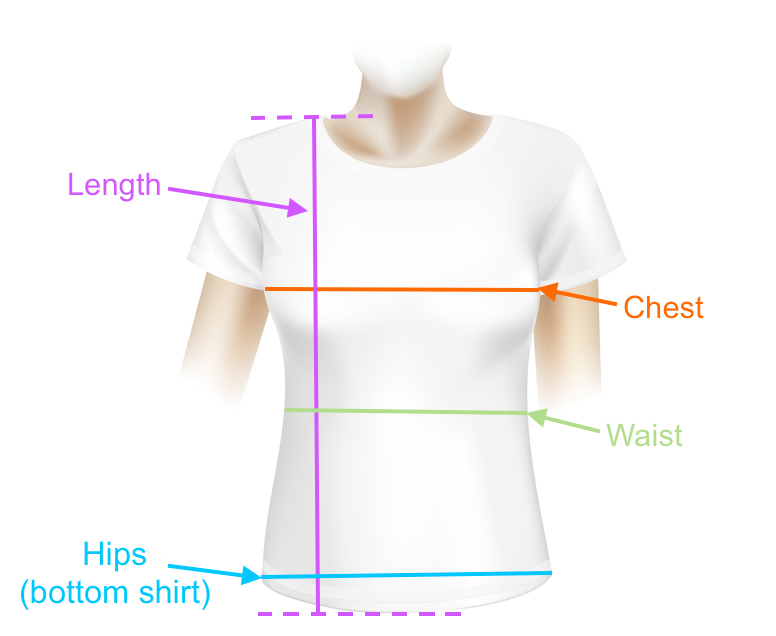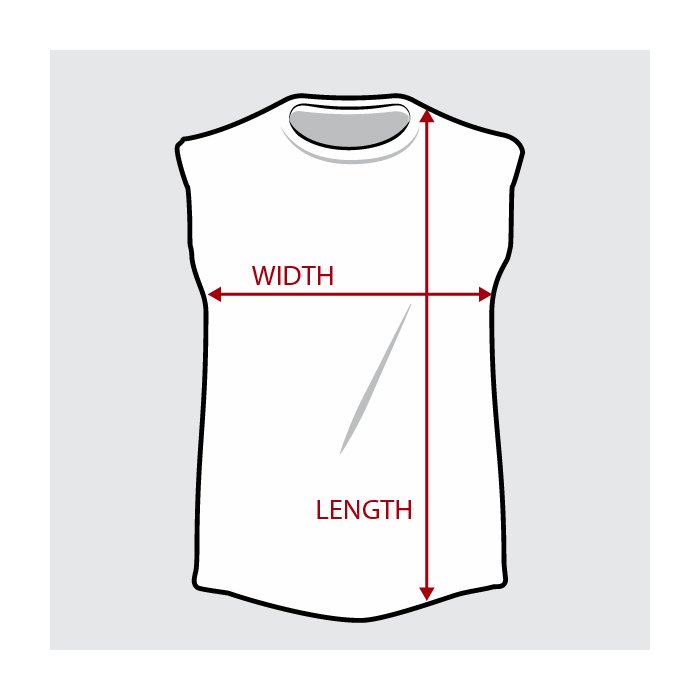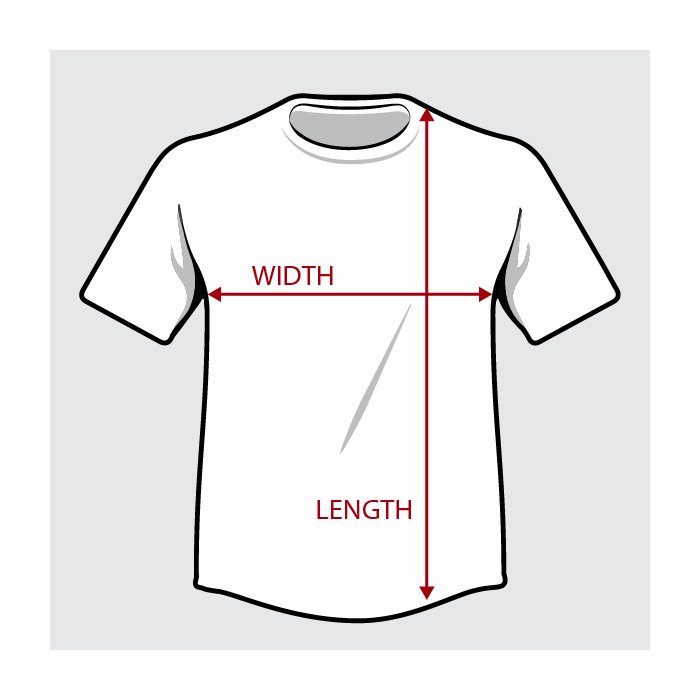Introduction: The Importance of Proper Fit
Choosing the right shirt can be tricky, especially when considering size differences. This is particularly true for unisex and women’s shirts. While both styles aim to provide comfort and style, the sizing and fit can vary significantly. Understanding these differences is essential for making informed purchasing decisions. This guide will explore the various factors affecting unisex and women’s shirt sizes, helping you choose the best option for your body type and personality.
Unisex Shirt Sizes Explained
Standard Sizing Metrics
Unisex shirts are designed to fit a wide range of body types. As a result, they often follow standard sizing metrics based on chest measurements. Sizes typically include small, medium, large, and extra-large, with each size corresponding to specific dimensions.
While this sizing system aims for inclusivity, it can sometimes lead to fit issues. Unisex styles may feel too loose or baggy on those with smaller frames. However, many people appreciate the relaxed fit that unisex shirts offer, making them a popular choice for casual wear.

Design Features
Unisex shirts usually feature a more straightforward design. They often have straight cuts and a more boxy silhouette. These features help accommodate various body shapes, but the fit may not be as tailored as women’s clothing.
The sleeves are typically cut wider, and the necklines may be more straightforward. As a result, unisex shirts can often feel more comfortable for everyday activities. Their versatile designs allow for easy layering, making them an excellent addition to any wardrobe.
Understanding Women’s Shirt Sizes
Tailored Fit
Women’s shirts are specifically designed to fit the unique contours of the female body. This means they often come with more tailored silhouettes, which can enhance comfort and style. Sizes typically range from extra-small to plus sizes, providing a wider variety for different body shapes.
Women’s shirts often have more fitted waists and broader hips to align with common body shapes. The designs may include features such as darts or cinched areas that create a flattering look. Understanding this tailored fit helps ensure an appropriate size selection.
Variety of Styles
Women’s shirts come in various styles, from fitted and flowy to casual and formal. This variety allows women to express their personality and style through their clothing choices. The options are seemingly endless, making shopping for women’s shirts a unique yet complicated experience.
When shopping, it’s essential to consider the intended use of the shirt. For example, a form-fitted blouse may work for work settings, while a loose-fitting tee is better suited for casual outings. Choosing the right style contributes to comfort and overall confidence.
Key Differences Between Unisex and Women’s Sizes
Measurement Differences
One of the most significant differences between unisex and women’s shirt sizes is how measurements are taken. Unisex sizes are based on shoulder and chest width, making them more adaptable to different body types. In contrast, women’s sizes often factor in bust, waist, and hip measurements.
These differences can lead to confusion when choosing between the two styles. A woman who typically wears a medium in women’s clothing may find that she needs a small or large in unisex sizing. Understanding these measurement differences aids in making informed decisions.
Fit and Comfort Levels
Fit is another critical distinction between unisex and women’s shirts. Unisex shirts typically provide a looser, relaxed fit, often appreciated for casual wear. Conversely, women’s shirts offer a more tailored, form-fitting silhouette that highlights the body’s natural shape.
Some women may prefer the relaxed nature of unisex shirts for comfort during activities. Others might feel more confident in a fitted shirt that flatters their figure. Ultimately, the choice between the two styles comes down to personal preference, lifestyle, and occasion.

How to Choose the Right Size
Take Accurate Measurements
Before making a purchase, taking accurate body measurements is crucial. For unisex shirts, measure the chest width and shoulder span. For women’s shirts, take measurements of the bust, waist, and hips.
This information will help you navigate sizing charts more effectively. Remember that sizes can vary between brands, so always check specific measurements. Accurate measurement can save you the hassle of returns and exchanges.
Experiment with Different Styles
If you’re unsure which type of shirt fits you best, don’t hesitate to experiment. Trying on various styles—both unisex and women’s options—can help you understand what you prefer. Pay attention to how each shirt feels in terms of comfort and mobility.
Consider factors such as fabric, sleeve length, and overall length when trying on shirts. This experimentation can lead to a more informed purchase and a wardrobe that reflects your unique style.
The Role of Brands in Sizing
Brand Variability
Different brands may have unique sizing approaches, further complicating the shopping experience. Some brands may offer more room in their unisex shirts, while others may provide a narrower fit. Similarly, women’s sizes can also differ significantly between brands.
It’s essential to familiarize yourself with the sizing nuances of your favorite brands. Checking customer reviews and sizing guides can provide valuable insights into how a specific brand fits. This can help mitigate surprises when your order arrives.
Consistency in Size Charts
Many brands provide size charts to assist in finding the right fit. These charts typically include specific measurements for chest, waist, and hip sizes. Utilizing these resources can help you compare your measurements against the brand’s size options.
When buying online, ensure you refer to the size chart specific to the brand. This attention to detail can significantly improve your chances of getting a well-fitting shirt and reduce the likelihood of disappointment.

Fashion Trends and Their Impact
Evolving Styles in Sizing
Fashion trends are continually evolving, impacting how both unisex and women’s shirts are designed and sized. In recent years, there has been a significant movement towards inclusive sizing across the fashion industry. Many brands now recognize the need to cater to diverse body shapes and sizes, leading to broader offerings for both unisex and women’s shirts.
This trend has encouraged brands to incorporate a wider range of sizes, making it easier for individuals of all body types to find stylish options. Designers are also experimenting with styles that blend characteristics from both unisex and women’s wear, such as oversized fits and draped fabrics. These innovations respond to consumer demand for versatility without sacrificing comfort, allowing wearers to express their personal tastes regardless of traditional sizing norms.
The Role of Social Media
Social media platforms have played a pivotal role in shaping perceptions of sizing and fit in the fashion world. With influencers showcasing various styles on platforms like Instagram and TikTok, there is a growing awareness surrounding body positivity and inclusivity. This influence is prompting brands to rethink their sizing strategies.
Many consumers are now vocal about their preferences for clothing that accommodates their body types without labeling them explicitly. This shift challenges traditional notions of what is deemed “appropriate” for men and women, encouraging experimentation with unisex clothing. As discussions around inclusivity gain momentum, brands are increasingly motivated to create shirts that fit all bodies, ultimately democratizing fashion and making style accessible for everyone.
Conclusion: Finding Your Perfect Fit
In summary, understanding the differences between unisex and women’s shirt sizes is crucial for making informed choices. While unisex shirts offer a relaxed and versatile fit, women’s shirts provide tailored silhouettes that enhance style.
By taking accurate measurements and experimenting with different styles, shoppers can find the perfect fit for their unique body types. Remember to consider brand variability and utilize size charts for guidance.
Ultimately, the right shirt can significantly impact comfort and personal style. Whether you prefer the loose fit of unisex shirts or the tailored lines of women’s options, being informed will lead to better choices. With this knowledge, you can confidently navigate the world of shirts and enjoy wearing clothing that feels and looks great.
